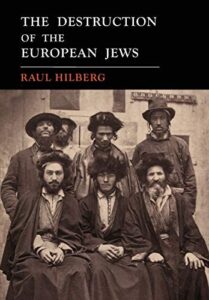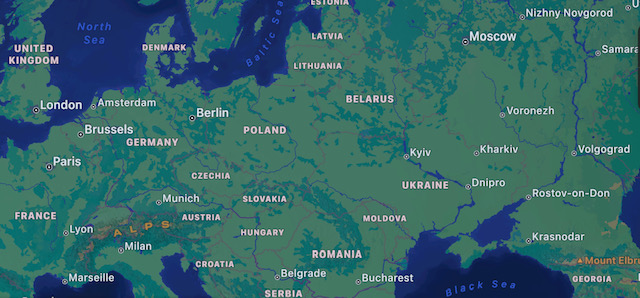Press Releases: Historiography Edition
Nick Bickel- Hilberg, The Destruction of The European Jews
Bickel- Hilberg, The Destruction of The European Jews
How a fascist dictatorship plunged the world into a massive war while committing mass genocide against Europe’s Jewish population and how they went about doing so.

Historiography Connections
World History, German History, Jewish History, Cultural History, History of Genocide.
Geographic Coverage
This book spans across much of Europe, mainly Eastern Europe were many of the work camps and death camps were located.

Book Citation
Hilberg, Raul. The Destruction of the European Jews. Eastford, CT: Martino Fine Books, 2019.
Press Release
The author, Raul Hilberg, was a Jewish Austrian-American Political Scientist and Historian and was considered the preeminent scholar on the Holocaust. Along with serving in World War Two, he paved the way for Holocaust studies and studied at the University of Columbia. He has written several books based on the Holocaust including German Railroads Jewish Souls, Sources of Holocaust Research, and The Anatomy of the Holocaust. The focus will be on his book The Destruction of the European Jews as it is his most popular book he has published. The book is held to be the first comprehensive historical study of the Holocaust and was originally published in 1961 in a time were not much information was known about the genocide.
Content
Almost everything that is widely known around the world about the Holocaust has most likely came from this book. Hilberg covers not only how the Holocaust was orchestrated, but he also writes about the effects of it on many levels including socially, politically, and economically. Hilberg insists that the book is not about the Jewish population, rather it is about the people who tried to destroy the Jews, the Nazi regime. The book describes how the Nazis worked as a organized machine and talks about the different functions they played from the German bureaucracy that past info and orders from desk to desk, all the way to the administrative and psychological obstacles that blocked some Germans from completing orders. The book also talks about other obstacles the Germans faced like Jews in mixed marriages, incarcerated Jews, seizure and transport, how the process played out in different countries. Hilberg ends the book writing about the Nuremberg Trials which held many high ranking Nazis accountable for the atrocities and the process of rescuing and salvaging any evidence of the genocide in order to learn the full truth of the Holocaust and the details about it. The Nazis tried to conceal the atrocities and destroyed many documents relating to the genocide leading up to the end of the war.
Methods
Hilberg’s book is comprised of information that had been gathered on the Holocaust along with his own research. The book switches from him writing about his own research and findings to first hand accounts during the Holocaust, information from German documents, graphs full of statistics, maps, and tables that all comprise information regarding locations, German command hierarchy, camp and ghetto layouts, and the money that was poured into orchestrating the Holocaust. The book is written not for telling a story or even an autobiography, rather the book is one large compilation of information on the Nazis involvement in the Holocaust and how they structured and Orchestrated it. The book follows the Holocaust in chronological order and ends with the consequences and aftermath of the Holocaust. Hilberg writes this book like a historian, using documents and evidence left before him to then decipher and write about in his book.
Critiques
Being one of the most compelling and first pieces of literature to highlight how the atrocities of the Holocaust were committed, the book still received some backlash when it was first published from people such as political scientist and Holocaust survivor Hannah Ardendt, and from Yad Vashem, Israel’s official memorial for the victims of the Holocaust. As the reader, the book can sometimes be difficult to follow due to the large amount of information being presented all at once and changing from information from documents to graphs. AS stated earlier, the book follows the Holocaust in chronological order but sometimes time jumps or graphs scale over different years, sometimes making it difficult to keep track of what happened when on the timeline. Other than those simple critiques and the opposition the book faced upon publication, the book overall is highly praised today and is used as the basis of all Holocaust research and history and does a very good job at covering majority of the details on how the Holocaust was orchestrated.
Impact on Historiography
As previously stated, the book is highly praised for being one of the first to shed light on the Holocaust in a time when not much information was known publicly. The book is more than ground-breaking as it has served as the basis of all Holocaust studies and research and pioneered the way for Holocaust studies. Any Historian who studies the Holocaust has most likely read this book and most certainly knows about it and the role it has played in the history of the Holocaust and genocide.
Hilberg, Raul. The Destruction of the European Jews. Eastford, CT: Martino Fine Books, 2019.

